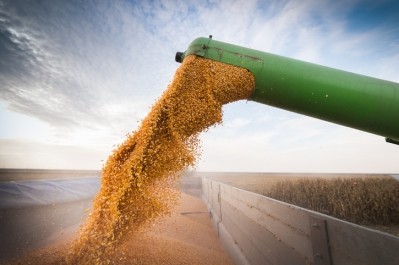US stockpiles of corn and soy continue to increase

The US Department of Agriculture (USDA) released its World Agricultural Supply and Demand Estimates (WASDE) report detailing aspects of feed and grain crop production on Friday (12 January).
It increased its estimates for corn production by 26m bushels from last month with a record yield offsetting a decline in harvested area. It hiked corn ending stocks by 40m bushels.
The USDA said corn production set a new record yield at 176.6bn an acre. Season-average prices for corn was set at about $3.25.
“Corn prices for the 2017 crop, harvested in the fall, will be the lowest in 11 years,” said Chris Hurt, professor of agricultural economics at Purdue University
There continue to be large supplies of the feed grain; good weather and above average yields have contributed to the growth in ending stocks for corn, he said.
“We have a lot of inventory. The last four years we’ve been producing more in the US than we can consume.”
Hurt: “There is a good chance you’re going to have moderate [feed] prices through the summer if we don’t have weather issues in the northern hemisphere."
Looking forward, there could be more incentive to plant additional soybean acres in the US in future years, somewhat shrinking the amount of corn produced, said Hurt. This may cause corn prices to increase while maintaining moderate prices for soybeans and soybean meal, he said.
“On average quality land we have a $54 premium to plant to soybeans. Farmers don’t radically change their mix, but that’s the way to lean next year some are saying – little higher acreage on soybeans and little less on corn.”
Soy exports surprise
The USDA decreased its estimates for soybean production by 33m bushels to 4.392bn bushels. Soybean exports were also reduced based on lagging sales commitments and increased competition.
“They lowered soybean exports 65m bushels. That is a major change and that suggests something was different from a few months ago,” said Hurt. “It was a little surprising.”
The US agency had previously predicted about a 2% increase in export sales for soybeans, he said. “USDA is now [predicting] 1% less exports than last year and we’re 14% behind on sales and shipments with what we’ve sold so far. If the pace doesn’t pick up there will be more adjustment coming but it’s still relatively early in the marketing year.”
The USDA raised estimates for soybean ending stocks by 25m bushels.
The season-average price range is considered to be $8.8- $9.80 with the price range for meal being $295-$335 per short ton.
The US Agency increased the soybean crop in Brazil by 2m tons.
Wheat market
The USDA raised ending stocks for the 2017/18 US wheat crop by 29m bushels based on a decline in use and increased supplies, said the USDA.
Wheat feed and residual uses were lowered by about 20m bushels. Wheat exports remained consistent.
About 32.6m acres of winter wheat were planted and the market prediction was about 31.4m, said Hurt.
Globally, wheat supplies were reduced by about 0.8m tons based on beginning stocks, which offset an increase in production, said the USDA. World production for 2017/18 was increased, stemming from production in Russia and Pakistan, the department said. However, use dropped and ending stocks were reduced.
Global exports were reduced by 1.3m tons predominately for Europe and Australia, the department said. Russia, however, is expected to see an increase in exports.















